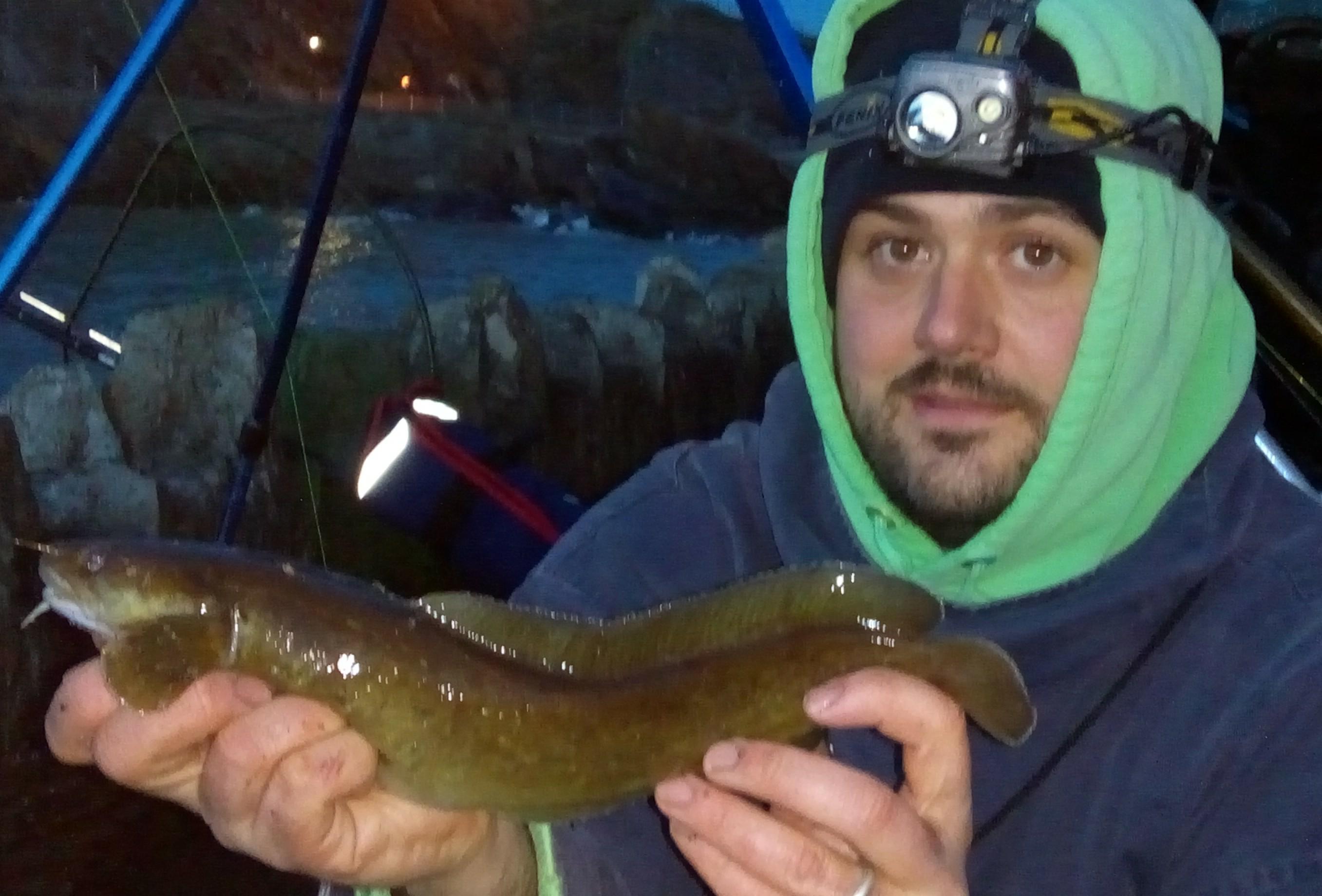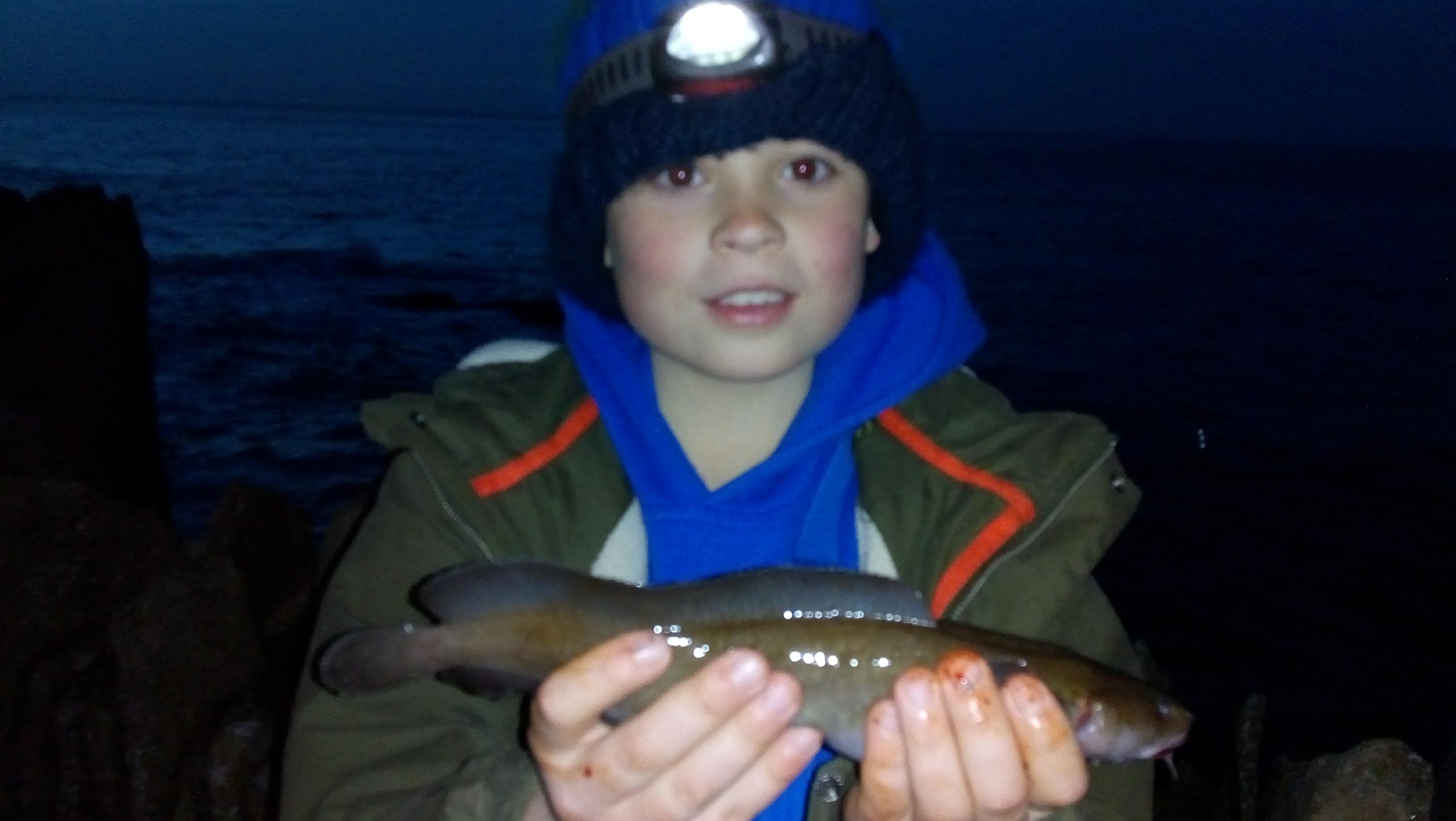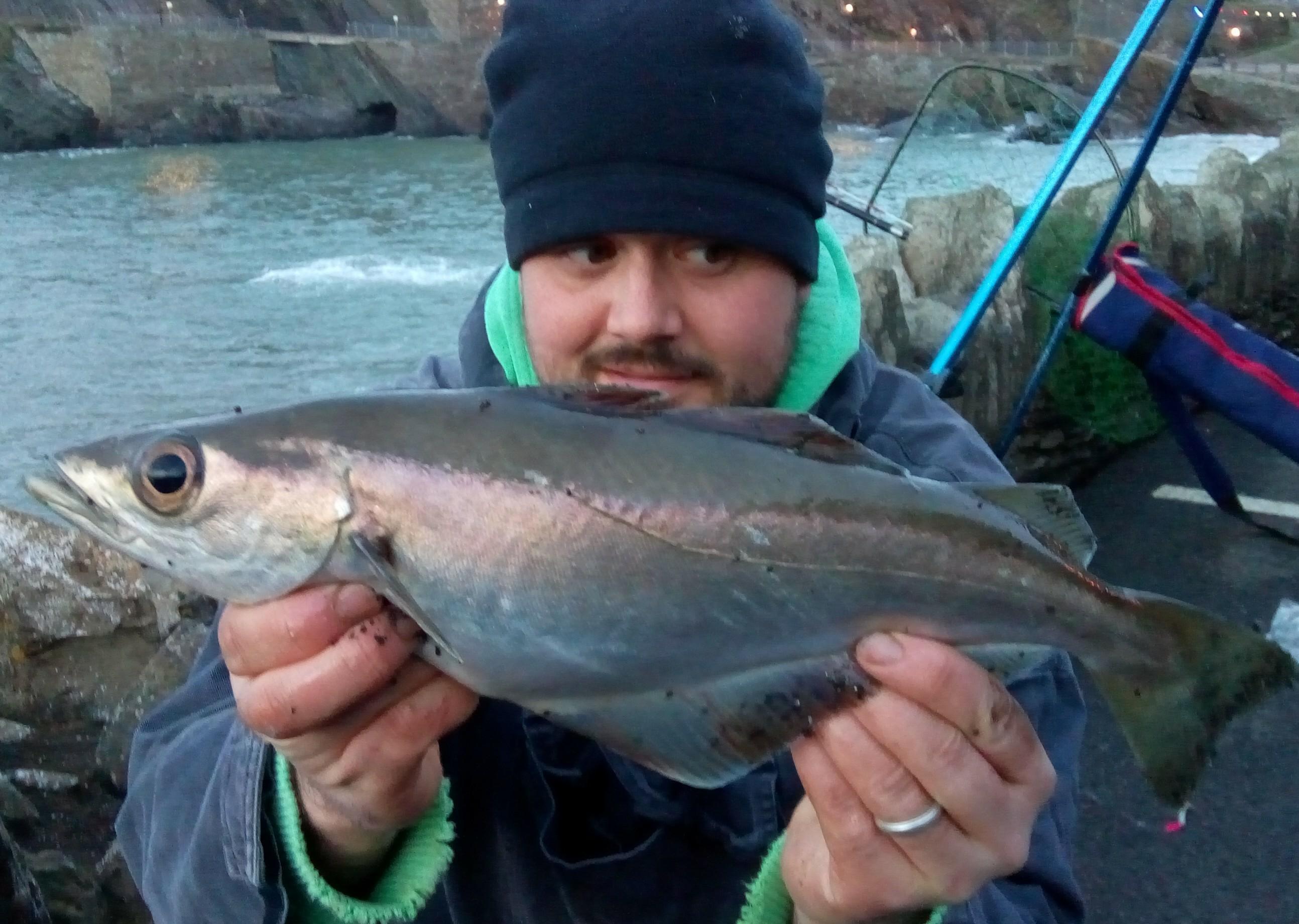Jonathon Stanway and Ross Stanway enjoyed a successful session from a North Devon Rock mark landing conger of 19lb 6oz and 16lb 4oz.
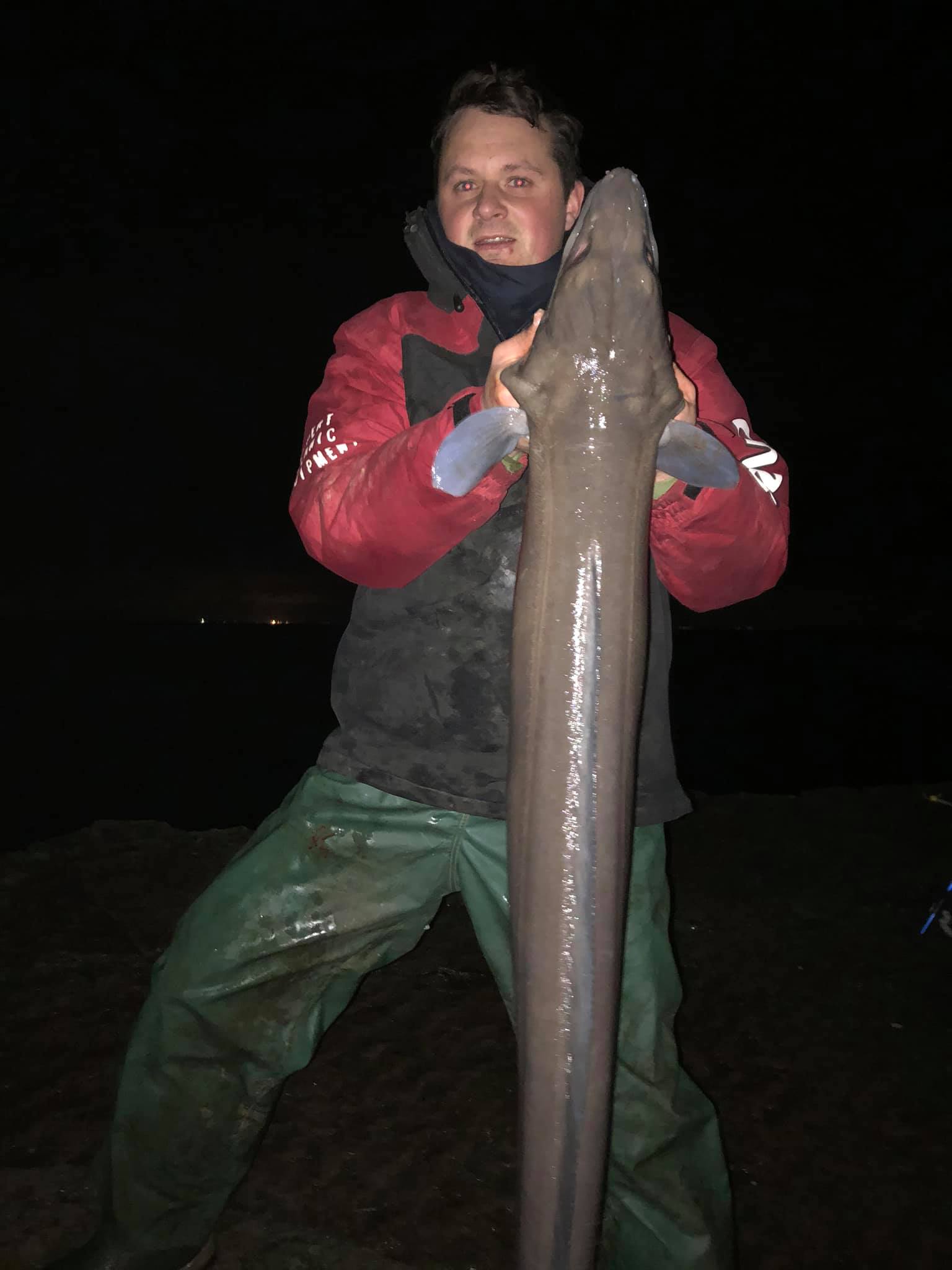
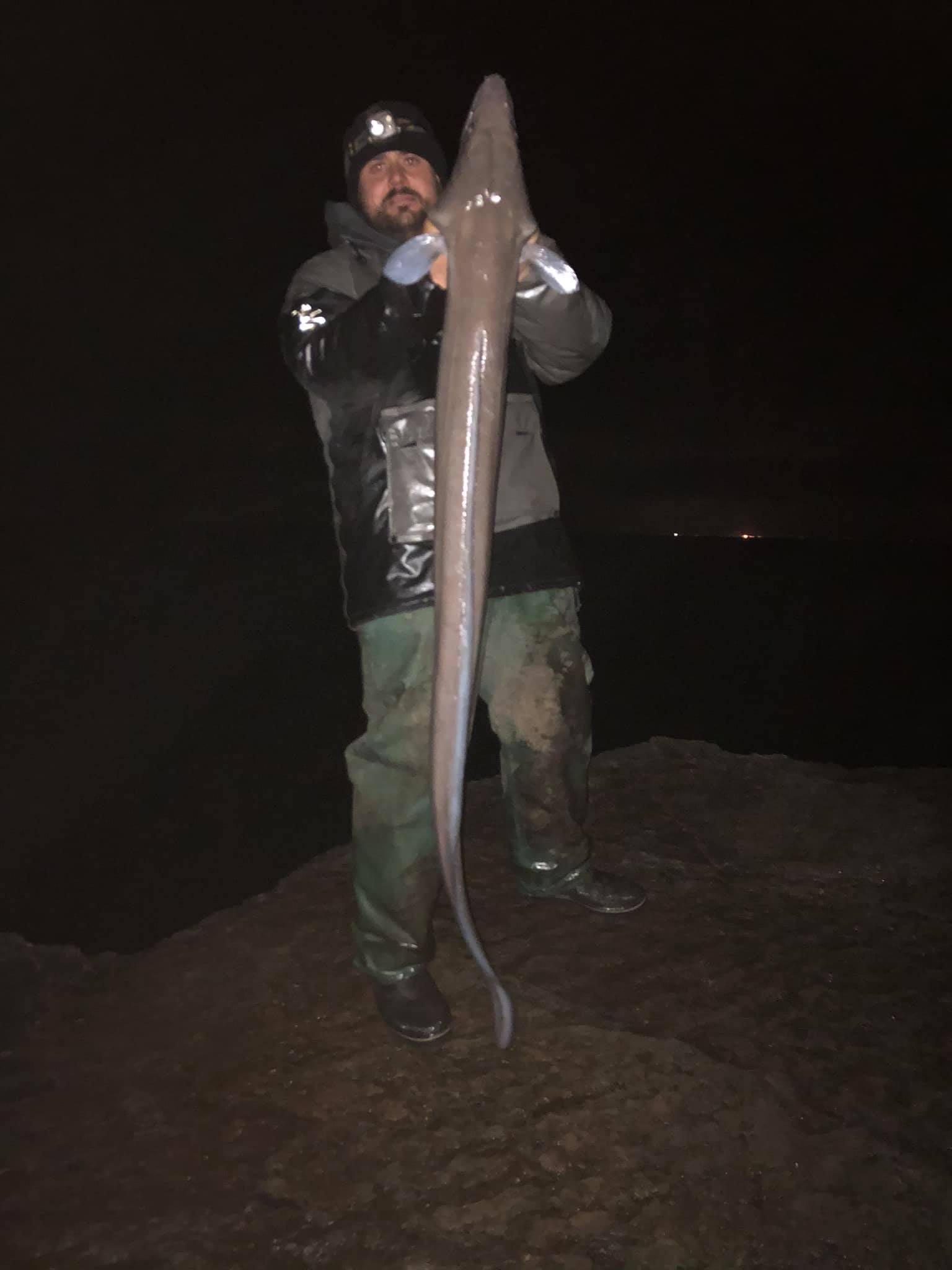
A FEW NOTES ON BIG FISH CATCHING ON ROCKY SHORES
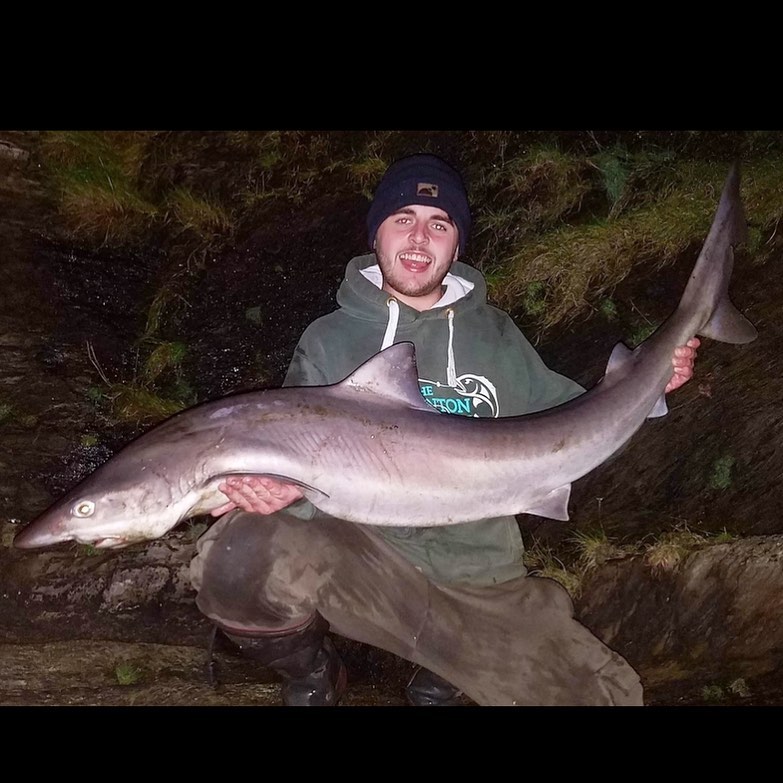
The next couple of months have much to offer the dedicated sea angler in North Devon with the open coast likely to see anglers land a variety of specimen fish. Fishing Open coast rock marks can be a dangerous pastime so always give careful consideration when planning trips. Safety should always be top of the agenda so always study the weather forecast and tide times. Local knowledge is invaluable when choosing where to fish but if this is not available study wind direction and check against a map to see how this will impact on the location. Google Maps can prove very useful for checking out marks giving some idea of topography. Ordinance Survey Maps will show public footpaths that give access to marks.
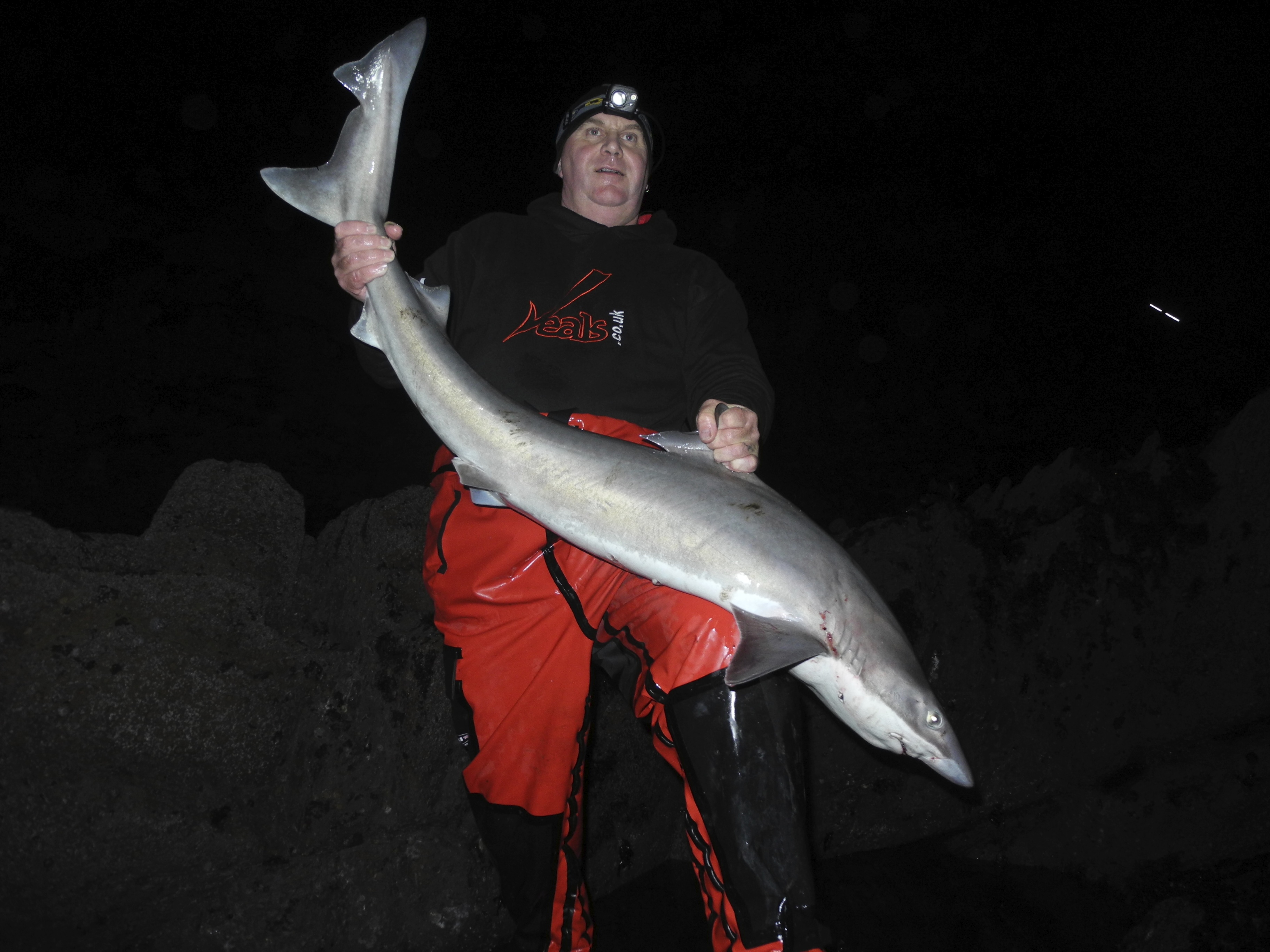
Joining a local angling club can also be a great benefit but you will need to make the effort to join and get to know the anglers before they give away all their secrets.
Always respect property and never leave litter it loses fishing and scars our marvellous coastline. It also ruins our reputation as environmentally caring.
During the winter months warm waterproof clothing is essential if you are to enjoy your fishing trips. Chillcheaters located in Braunton offer a superb range of quality gear that I can wholeheartedly recommend. Sturdy Footwear with good grip is vital for scuffling around on treacherous wet rocks. Rock Grip boots with studs are one of the best investments I have made in recent years and I struggle to comprehend how I once coped with standard wellies etc.
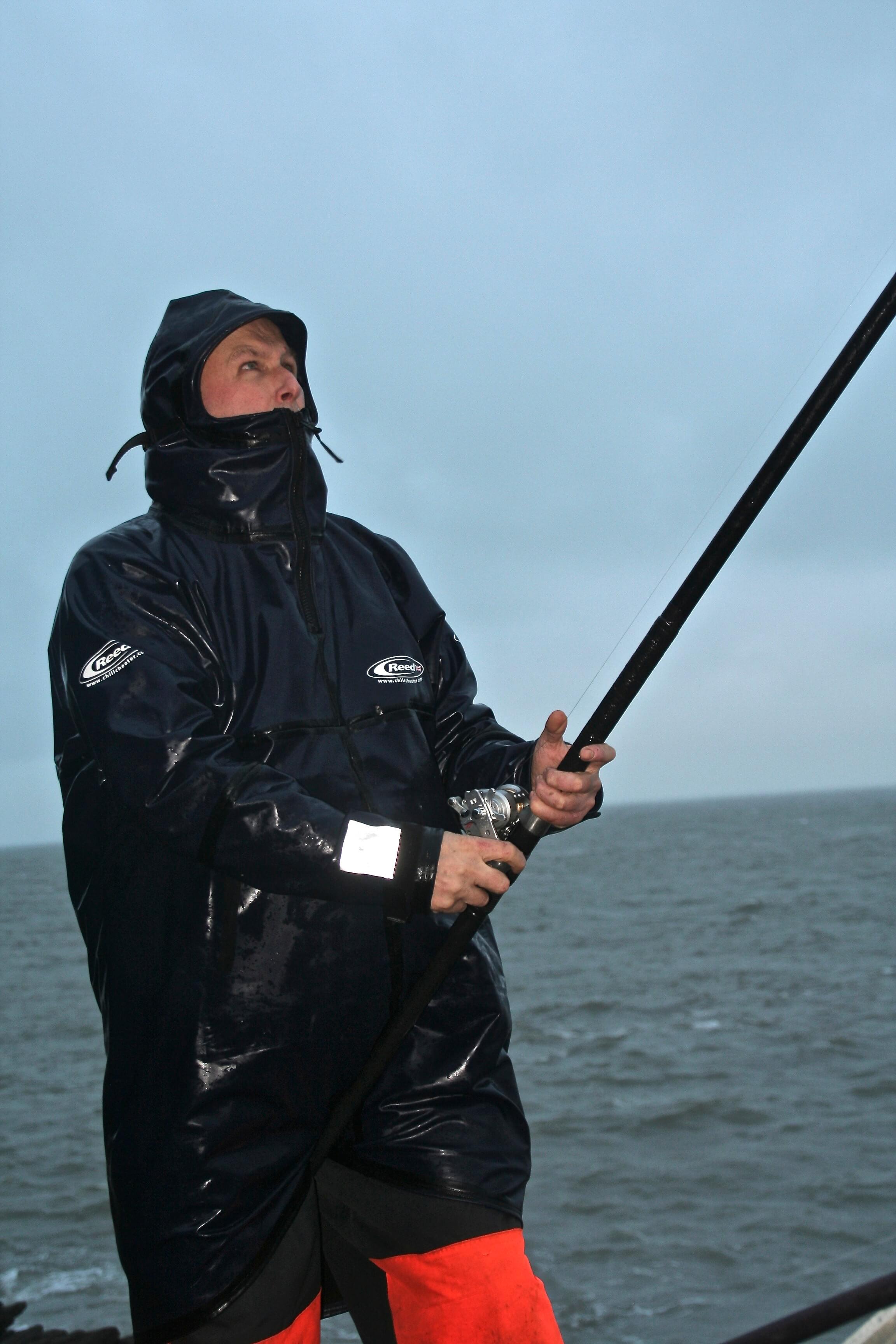
Lighting has dramatically improved in recent decades with headlights now light in weight offering powerful lighting options and long charging life with small batteries. I am currently using a Fenix HM 65 R that purchased from Veals Mail Order.

Big fish on the open coast demand strong tackle to give any chance of landing them so choose rods capable of casting 8oz, reels that can hold plenty of line with a good retrieve capable of pulling terminal tackle clear of snags and bullying big fish from rock and kelp.
Main lines of between 20lb b.s and 30lb b.s. I use a pulley rig for 90% of my winter fishing.
A leader with at least ten yards of line on the reel( With rig hanging from the rod tip) gives a chance of lifting moderate fish out of the sea. When targeting big fish I have started using Mason 49 Strand wire 175lb b.s. This is kink resistant an advantage with the large numbers of strap eels around the coast each winter.

Sakuma Manta Extra hooks are reliable with 4/0 to 8/0 suitable for big baits. A Pennel set up is probably more reliable for hook ups. There is a trend at present for using single catfish hooks. This can reduce snagging over rough ground and these hooks are without doubt capable of landing any fish hooked in the Bristol Channel.
Many will be reading this thinking that this approach is over the top. But there is no way of knowing what will take your bait. Tope, conger, spurdog, bull huss and big ray are all likely.
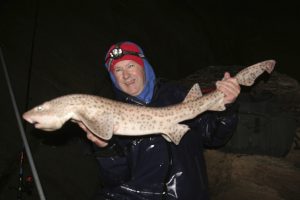
Big fish baits are order of the day with Ammo the best quality available in my experience. Mackerel, Squid, Bluey, Launce, herring, fresh pouting, whiting, rockling and flounder all have their day.
Landing fish is often the most risky time so ensure you have the right gear to give yourself a good chance. In calm conditions it might be practicle to grab the trace and fish using heavy duty gloves. Generally a long handled capacious net is the best option for bull huss and spurdog. A long handled gaff is an option if used carefully avoiding the vital organs but is a last resort in my view.
The key to success is of course being in the right place at the right time. Location + Weather + Tide + Experience and a little luck!
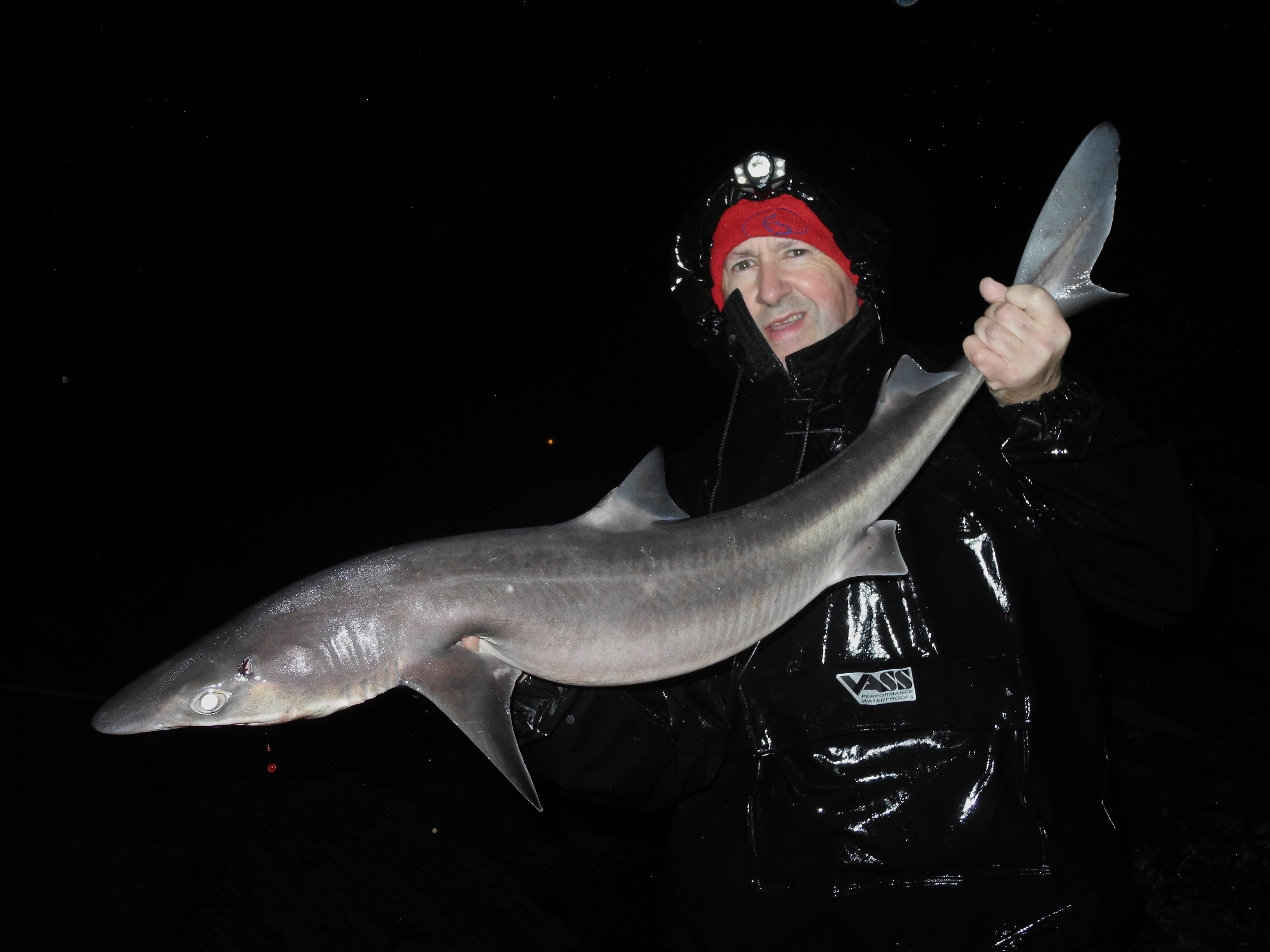
Reports of catches from the open coast seem to have eased off since the dawn of the New Year which is no surprise for several reasons. The calm weather and high pressure has resulted in water clarity increasing this tends to ensure that fish move into deeper water. During rough weather many species move close inshore to feed upon food that is dislodged by the rough sea. Shoals of bait fish are also broken up during rough weather and the prey also become harder for predatory fish to see which may encourage these fish close inshore to search for alternative food. Remember fish are basically interested in two things; sex and food! The other factor is of course a reduction in angling effort as most have gone back to work after the Christmas break and those that do fish tend to be the dedicated few who do not always share their catches on social media.
I decided to head out onto a rock mark I have not fished for a few years determined to see what was about and to ensure I keep a bait in the water. I like to get out at least twice a week throughout the year. It was exceptionally calm when we arrived at the chosen venue and I could see that other angler’s lights were shining out from other rock marks in the area. As always I wondered how they were fairing and whether our choice of mark would reward us.
It’s always good to arrive at the water’s edge and make that first cast of a session. On this occasion I baited with a decent hookfull of freshly frozen herring caught during last week’s visit to Torquay. (See earlier feature http://www.northdevonanglingnews.co.uk/2019/01/06/squid-trip-brings-glittering-bonus/). Before I had the second rod baited the ratchet clicked and the rod tip rattled. Picking up the rod I leaned into what felt a weighty fish. To my dismay I immediately became snagged. Placing the rod in the rest I baited the second rod and put that out before once again trying to extract the fish from the snag. A steady direct pull resulted in a slow release of tension as the tackle pulled free. Lifting the rod I was pleased to feel a weight on the line. Moments later a conger and a large stem of kelp arrived at the surface. I scurried down to the water and grabbed the heavy wire trace lifting the eel of around 9lb onto the rocks. This is a big benefit of using a heavy trace as most fish can be dragged out without use of a gaff or net neither of which are ideal when dealing with conger.
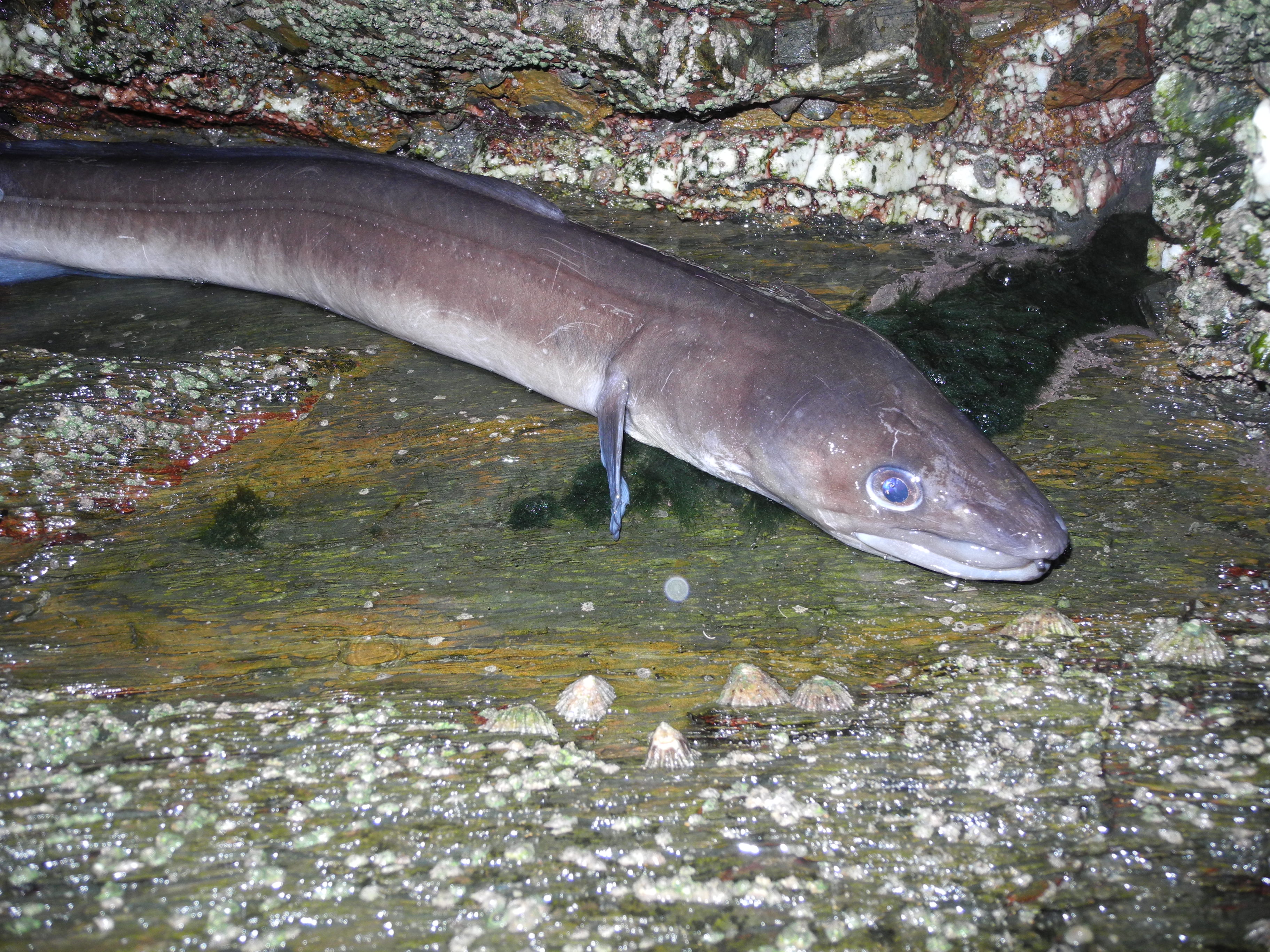
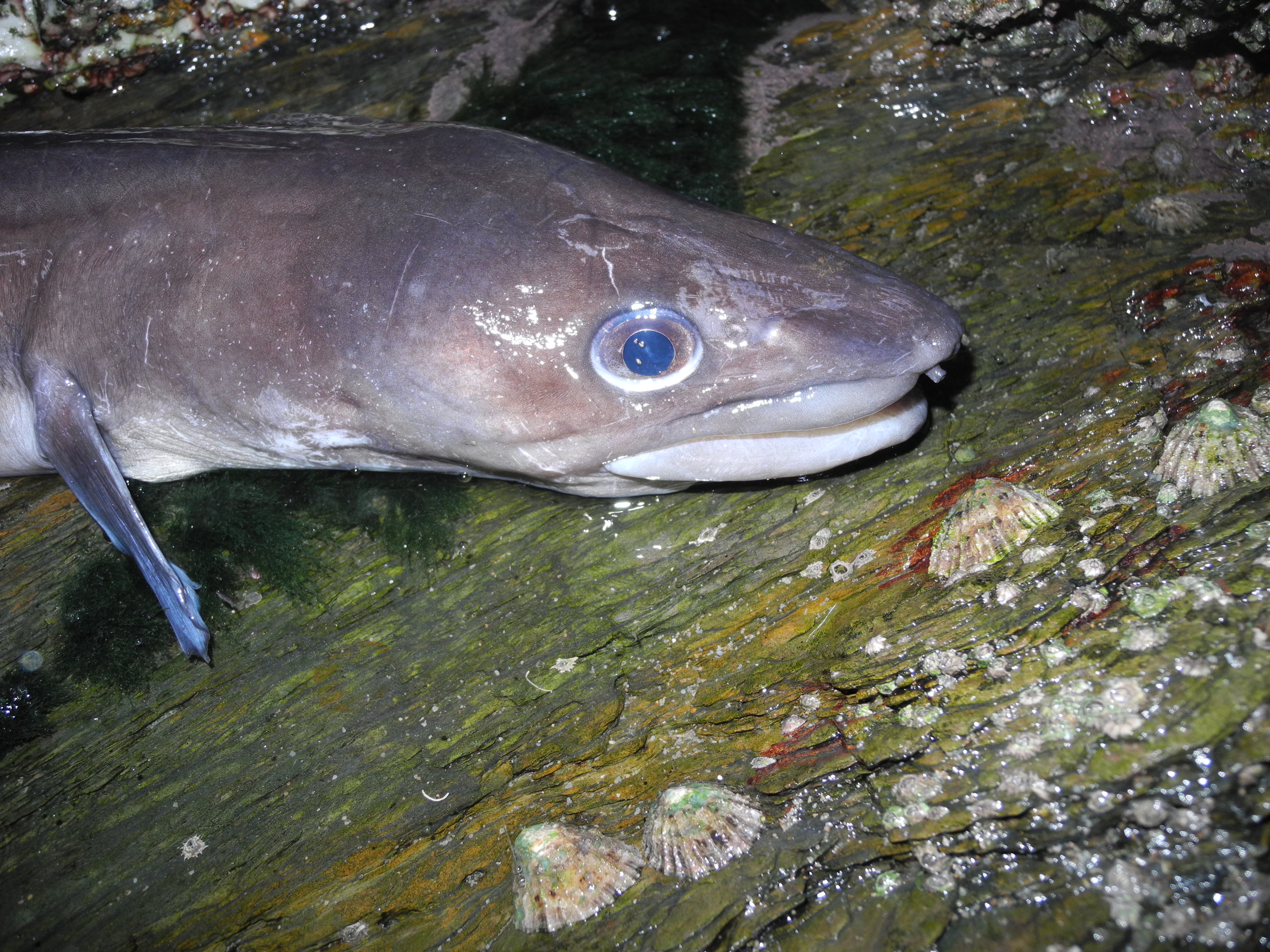
I had expressed that the evening seemed perfect for catching a big eel with calm, mild conditions and a dark overcast sky. The conger were certainly on the feed as the next hour and a half up to high water saw us land around half a dozen more eels, no hoped for monsters but not the dreaded straps we have been catching recently. The session progressed as most do far quicker than one would like and with frequent bites and several lost sets of gear time to sit back and savour the evening was limited. So much so that we were both perspiring as a result of dressing for what we thought would be a cold night. A benefit of Reeds Chillcheater clothing I guess.
Shortly after high water the rod tip nodded decisively as something mouthed the bait out in the dark water. I pick up the rod and lifted to feel a pleasing resistance, another moderate sized eel was what I expected but to my delight a decent bull huss appeared in the clear water illuminated by the headlights beam. To be honest it looked bigger than it actually was as I called urgently for Rob to grab the landing net. To my relief the huss was soon safely within the net. It failed to make double figures but at 8lb 10oz was a pleasing result that proved very difficult to get a photo of as it twisted and turned in my hands.
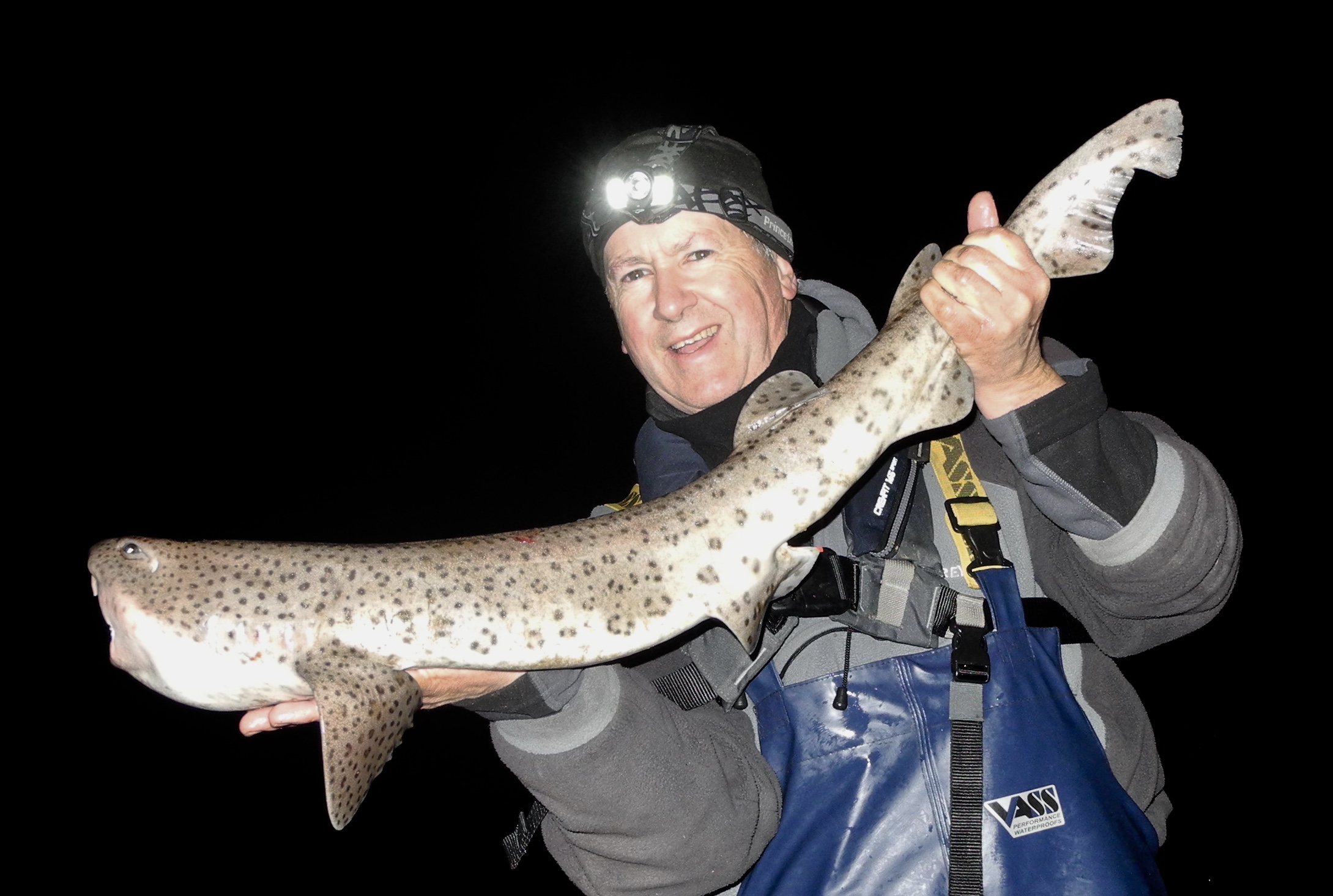
With work the following day it was not going to be a late finish and at close to 11.00pm we packed away the gear and began the steep climb back to the van. As we packed away the gear I recalled dark nights beneath the trees when I had fished there as a teenager forty odd years ago. I am lucky that I still have the energy and drive to continue chasing the fish on winter nights. I commented to Rob that I often hear owls calling from the tree’s here and as the words drifted into the night the distinctive hoot of a tawny owl sounded as if answering with a hoot that he was indeed still there!
March and April are generally quiet months out on the coast but there are always a few fish to be found and its often good to just be out there in the fresh air. Combe Martin SAC member Ross Stanway fished an Ilfracombe Rock mark with his young son Charlie and they both tempted shore rockling with Ross landing a new personal best of 13.5oz. Between them they landed pollock, dogfish and rockling.
There should be very chance of bull huss from rough ground marks and the fisrt ray should be showing from local surf beaches.
